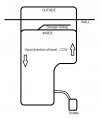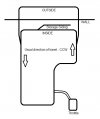DVS4G
RR Dave
Hello Friends, I need an education. Modeling trains for years, but just getting wet in G Scale recently. Tell me about track. What brand am I looking at if I see rail joiners with slots and holes and tiny screws? Why do those same joiners seem to have a high side that seems to need to be on the outside of the rail so that flanges don't bump across it? What is the purpose of this extra high side? The screw holes are low enough that they don't seem to be necessary, so why are they even there? How many different kind of track are there? What is most favored?
And then, turnouts. Are certain brands favored more? Do they all fit together equally well? I have a place that I want to use a very long turnout so as to make the smoothest direction change possible. I am repairing a line that has been going through the curved side of a very tight turnout for years to the point that it has worn out the plastic point of the frog and now the wheel hits the end of the rail. I am thinking that by reversing the direction of the turnout so the most used side is the straight through side, I can lessen the problem of point wear and derailing. A long switch would allow the diverging (curved, but not much if long) side to be smoother when that direction is chosen (which is less often). These long turnout are spendy, so before I guess on which to purchase, I was hoping for some advice.
I am hanging onto the arms of my office chair, prepared for all of you to unleash your opinions!
And then, turnouts. Are certain brands favored more? Do they all fit together equally well? I have a place that I want to use a very long turnout so as to make the smoothest direction change possible. I am repairing a line that has been going through the curved side of a very tight turnout for years to the point that it has worn out the plastic point of the frog and now the wheel hits the end of the rail. I am thinking that by reversing the direction of the turnout so the most used side is the straight through side, I can lessen the problem of point wear and derailing. A long switch would allow the diverging (curved, but not much if long) side to be smoother when that direction is chosen (which is less often). These long turnout are spendy, so before I guess on which to purchase, I was hoping for some advice.
I am hanging onto the arms of my office chair, prepared for all of you to unleash your opinions!


